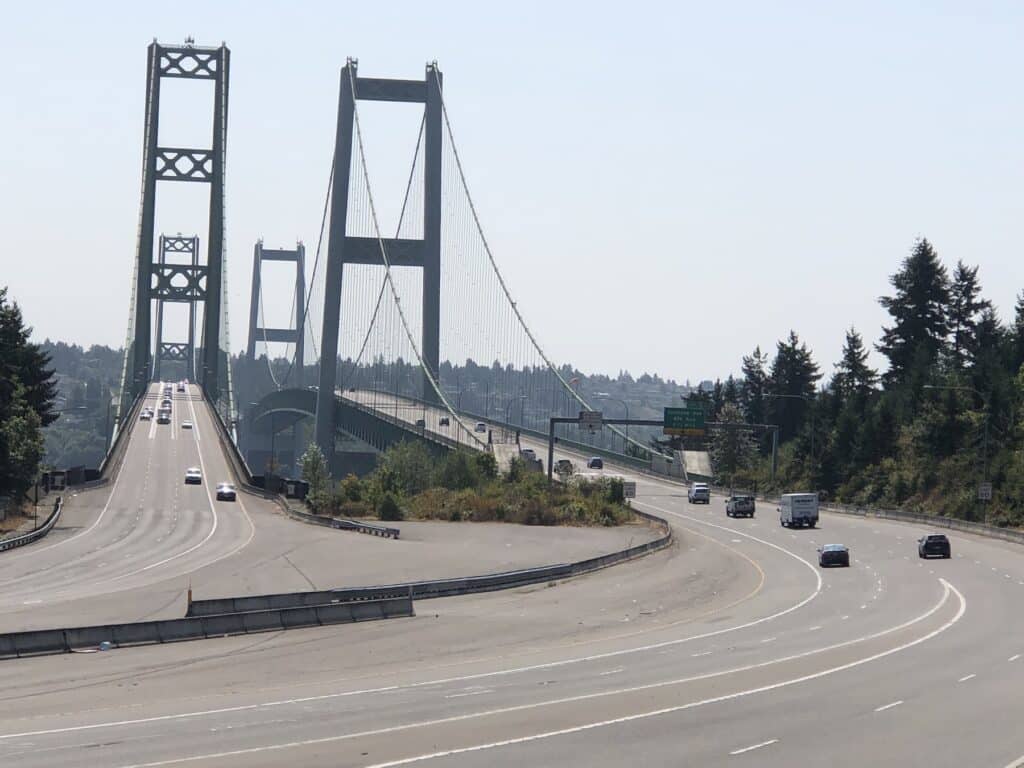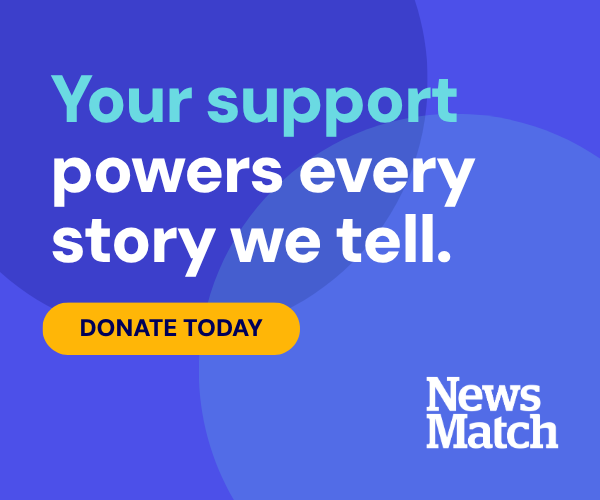Community Government Transportation
WSDOT upgrades Narrows bridge tolling equipment
Crews have finished replacing Tacoma Narrows Bridge toll equipment, bringing nighttime lane closures to an end.
Since February 2024, either Highway 16 mainline lanes or all but one toll booth periodically closed for the work, shifting traffic to one side or the other. New equipment was installed and old equipment removed between spring and winter 2024, said Washington State Department of Transportation Toll Division spokeswoman Lauren McLaughlin. Testing was completed in June.
The $12.5 million job comprised replacing cameras, lights, radio frequency identification (RFID) readers and replacing in-ground sensors with overhead ones in the six toll booths, four eastbound Highway 16 lanes and the 24th Street Northwest on-ramp.
The cameras take photos of license plates for pay-by-mail customers, the RFID readers read information from Good To Go! transponders and the sensors identify the size of each vehicle and number of axles, McLaughlin said. Vehicles are charged extra for each axle more than two to a maximum of six.
The work also included setting up a backup server off-site to safeguard data during equipment damage, power loss or natural disaster. And a tap-and-pay option was added in November for toll booth users.
Tap-and-pay option was part of project
“It’s something customers were requesting and gives drivers another option for paying their tolls with just the tap of their phone or card, which saves time at the booth and gets them on the bridge more quickly,” McLaughlin said.
The new Narrows Bridge opened on July 15, 2007. The Transportation Department had planned to replace the toll equipment in 2020, about midway through the tolling period that is projected to end in 2032. But the pandemic delayed that plan, McLaughlin said.
The state chose not to milk the original equipment for seven more years. It was considered state-of-the-are technology, but “has been well maintained long past the end of its usable life,” according to the tolling webpage. New equipment will allow the system to continue to function reliably and meet current standards and best practices, it states.

Equipment was replaced in the six toll booth lanes, four eastbound Highway 16 lanes and 24th Street onramp.
“Because the more it aged, the greater the risk that it would start to malfunction and cause problems for our customers,” McLaughlin said. “… As any toll system ages there is always a chance that the equipment will be less effective at consistently reading passes or license plates, that it won’t keep up with the pace of technological development, or the needs of our customers.”
Old equipment also often requires more maintenance that can require lane closures, she said.
The $12.5 million comes from previously collected toll revenue and won’t extend the duration the bridge will be tolled. As part of operations, tolling is an accepted use of toll revenues, along with bond repayment, maintenance and insurance.
Bridge projected to be paid off in 2032
The bridge will be paid off and tolls removed by June 2032, according to the Washington State Transportation Commission’s 2025 annual forecast. Recent increases in traffic and revenue, that are expected to continue, shortened the 2024 estimate of Fiscal Year 2033 (July 1, 2032-June 30, 2033).
The bridge cost $729 million to build plus $57.6 million in sales taxes for a total of $786.6 million, said Transportation Commission Deputy Director Carl See. Tolls will pay for 98.6% of the costs, or $775 million.
The original payoff date was in 2030, when $681 million in general obligation bonds will be satisfied. The $48 million difference between the $729 million bridge cost and the $681 million in bonds is largely the result of contributions provided by the Legislature from the Motor Vehicle Fund that offset a portion of construction costs that had initially been planned to be paid for with toll revenues, See said.
The total cost, including interest on the bonds, will be $1.48 billion, See said. Through June 30, the end of FY 2024, $975.2 million in debt service payments have been made, both principal and interest. Through the same period, the bridge has generated about $1.10 billion in adjusted gross toll revenues. And from July 2024 through April 2025, an additional $62.85 million has been collected, bringing the total to about $1.17 billion.
About $7.9 million has been spent on bridge maintenance, $11.6 million on preservation (repair and replacement), $25.3 million on insurance and $193.1 million on toll operations, See said.
Legislature froze toll increases
The bridge was financed with escalating debt payments that required frequent rate increases. The Legislature pushed out the payoff date a couple times to slow and ultimately freeze the rate hikes.
The $57.6 million in sales tax was originally supposed to be paid in 10 equal annual payments beginning in 2013. The Legislature deferred repayment until after the debt service is fully paid in 2030. The state and local sales and use tax was imposed on site preparation, construction, acquired machinery and equipment, and rented equipment.
In 2018, lawmakers agreed to loan the bridge up to $85 million to help pay bonds while keeping toll rates at no more than 25 cents higher than 2018 rates. The loans will be paid back after the sales tax.
The Legislature also provided funds that don’t need to be paid back. In 2022, it approved of transferring $130 million from the general fund in installments of $13 million per year. That came with a 75-cent rate reduction to what they are today — $4.50 for Good to Go! transponders, $5.50 at the toll booths and $6.50 for pay by mail for those who use the through lanes without a transponder.



